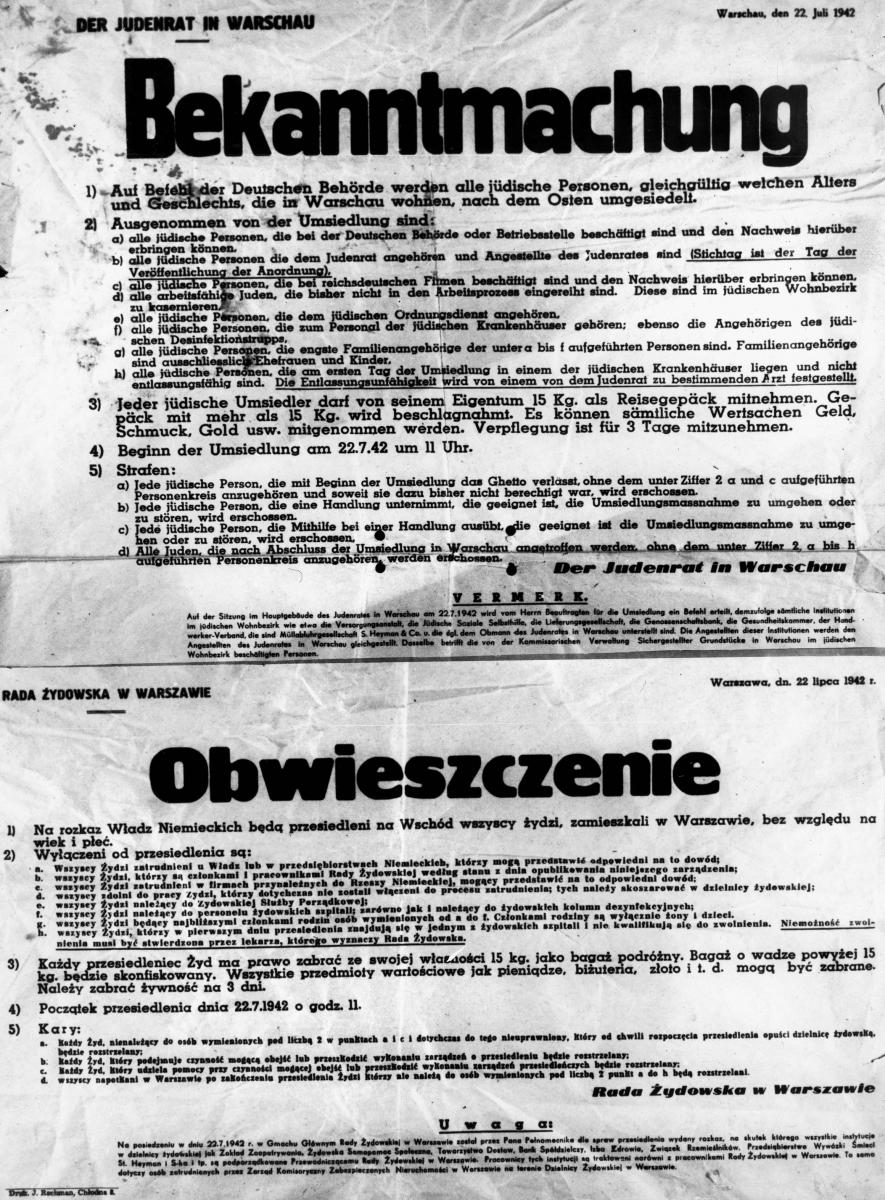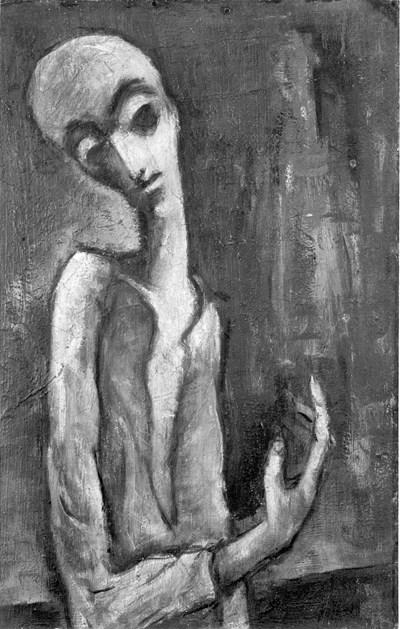
Yad Vashem


Yehuda Bacon, Yad Vashem

As part of his work as one of the founders of the postwar Central Jewish Historical Commission in Poland, Holocaust survivor Nachman Blumental, authored Slowa Niewinne (Innocent Words), a glossary of Nazi euphemisms. The Nazis upheld a deeply veiled language, which they used to hide their vicious goals and deceive their victims, primarily Jews. To illustrate, “resettlement to the east,” was often used to deceive the Jews bound for extermination into thinking that they were being sent for slave labor in eastern territories. This particular euphemism, as well as referring to the gas chambers as “showers,” were methods used to prevent mass hysteria and potential rebellion amongst their Jewish victims.
But the Nazi euphemistic language did not start with the murder of the Jews, nor was it limited to them. The invented term “asocials,” referred to the Nazis’ non-political nor racial enemies, such as vagabonds and common criminals. The term Lebensraum (Living Space) was coined prior to the advent on Nazism; however, the Nazi Lebensraum program, which began before the war’s onset, aimed to rid certain territories of non-Germanic peoples. This was done by means of annexations and expulsions in order to provide more “living space” for the so-called "Aryan" Germans. The Protectorate of Bohemia and Moravia, the western part of what was then Czechoslovakia that annexed by the Germans, is an example of not only Lebensraum, but also of another euphemism. Nations owning protectorates are supposed to protect the people within; however, the Nazis merely absorbed this protectorate into their own land and did little to aid its inhabitants.
Even the most heinous and notorious of the Nazis’ endeavors, the Endlösung der Judenfrage, or the “Final Solution to the Jewish Question” in English, is a sheer euphemism. What was this so-called “question?” Only antisemites would even come up with such a dilemma, which was how to dispose of the Jewish people. The answer to the question – the "Final Solution" – was simply to kill them all through “special treatment,” i.e., murder.
While the Nazis used euphemisms in their language, their Jewish victims also developed slang terms for various aspects of their experiences. Some who strove to survive in hiding referred to their hiding places as “malinehs.” This term most likely stemmed from the Hebrew term “lina,” meaning to briefly stay somewhere to rest. Many, if not the vast majority of survivors tell of “organizing,” the term used for stealing food or goods, especially to benefit one’s health or overall wellbeing. When it comes to wellbeing a “muselmann,” literally meaning a “muslim” in Yiddish, was a concentration camp inmate who was near death, mere skin and bones, a walking skeleton, with no will to live. While the origin in the term is unclear, some scholars say it stems from the likeness of a muselmann’s appearance to a Muslim in prayer, with his head bowed down to the ground.
As early as December 1945, Holocaust survivor Yisrael Kaplan distributed a questionnaire amongst survivors in order to understand their experiences during the Nazi years. Resulting from this questionnaire is the Yad Vashem Publication The Jewish Voice in the Ghettos and Concentration Camps: Verbal Expression under Nazi Oppression, a collection of poems, jokes, popular expressions, proverbs, slogans, curses, codes and more that were invented by the Jews in camps and ghettos.
Unfortunately, the end of the Holocaust did not mark the end of euphemisms. They continue to this day on the tongues of those who practice Holocaust denial or distortion, so-called “historical revisionists.” They claim to merely "amend" history, yet in reality, they purposefully twist the truth of the Holocaust in order to serve their own, age-old, antisemitic agendas.









